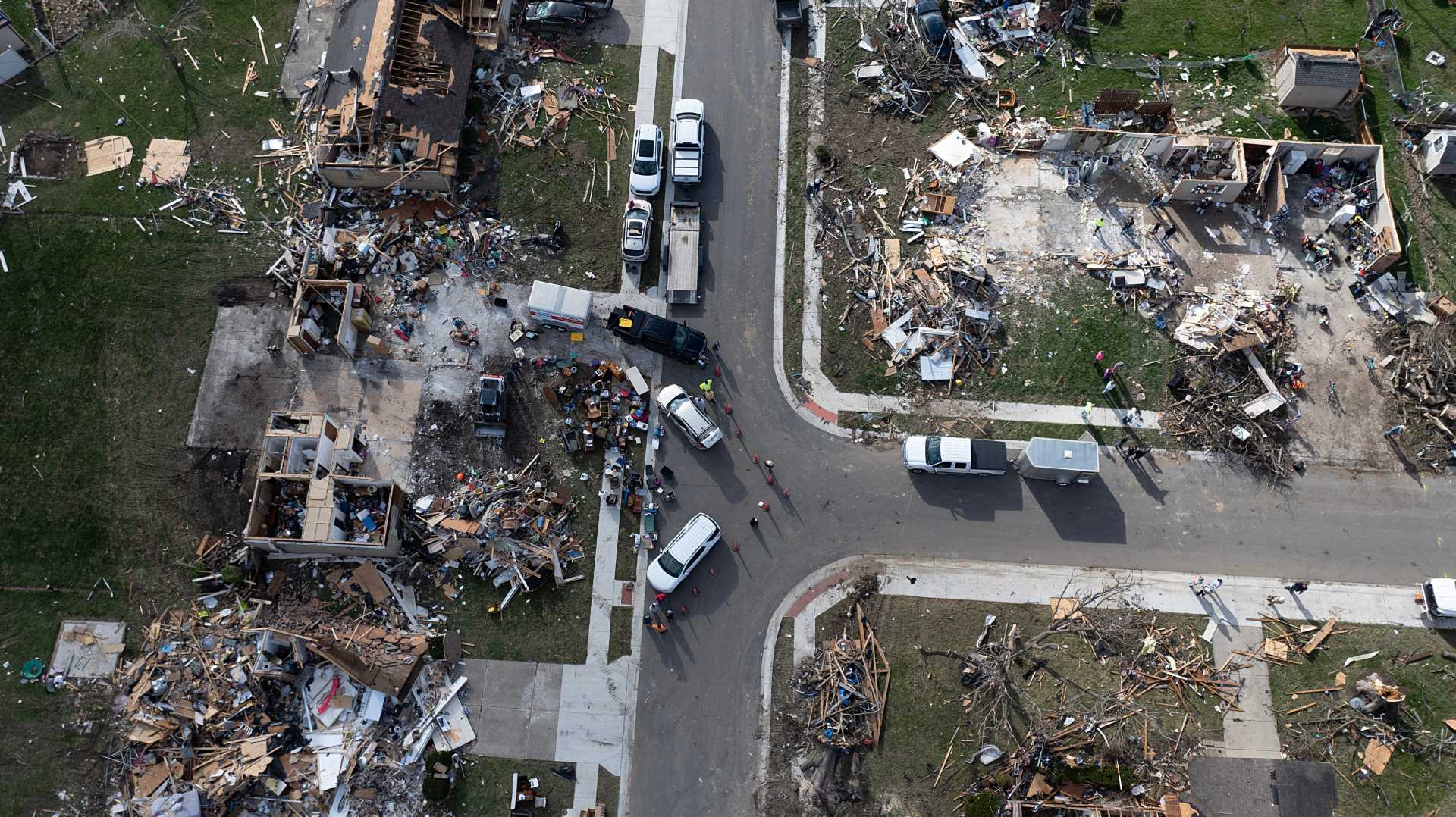News
Four Tornadoes Confirmed in Ohio Amid Severe Storms

COLUMBUS, Ohio — The National Weather Service confirmed that at least four tornadoes touched down in Ohio during severe storms on Sunday evening, resulting in significant damage across several counties.
The most impactful was an EF1 tornado that struck Fayette County, near Jeffersonville, around 9:30 p.m. The tornado, measuring approximately 250 yards wide, traveled nearly four miles in just four minutes, with wind speeds peaking at around 90 mph.
According to the NWS, the tornado formed along State Route 734, where minor damage to trees was first reported. However, as it crossed Jeffersonville-West Lancaster Road, the tornado strengthened, causing one outbuilding to be destroyed and removing roof coverings from two other buildings. Hardwood trees were snapped, with debris found more than half a mile east of Jeffersonville-West Lancaster Road.
Power infrastructure was also impacted, with power poles damaged and metal roof panels torn off a service station near Jefferson Industrial Park. Additionally, several recreational vehicles were flipped over in Jefferson Crossing. The tornado dissipated shortly after moving across Interstate 71.
In total, the storm event included three additional weak EF0 tornadoes, with wind speeds peaking at 85 mph. One EF0 tornado was reported in Butler County, just north of New Miami, while another touched down near West Chester before crossing into Warren County. The third EF0 tornado was confirmed near Corwin in Warren County.
The NWS has indicated that a storm survey team is still evaluating the paths and lengths of each tornado. Further details about the tornadoes’ trajectories will be made available in the coming days.
This outbreak is part of a concerning trend for Ohio, which recorded a historic number of tornadoes in 2024, reaching a total of 74, surpassing the previous record of 62 set in 1992. Tornadoes are typically classified into categories based on the Enhanced Fujita Scale, which assesses the damage caused by the storms.
As meteorologists explain, tornadoes form due to wind shear—variations in wind speed or direction at different altitudes. When the conditions align with strong thunderstorm updrafts, they can produce vertical columns of rotating air that lead to tornado formation. The NWS emphasizes the importance of timely alerts and warnings to ensure public safety when tornadoes are identified.
The National Weather Service office in Wilmington, which oversees central and southwest Ohio, continues to monitor weather patterns as more severe weather is predicted later in the week, increasing the potential for additional damaging storms.












